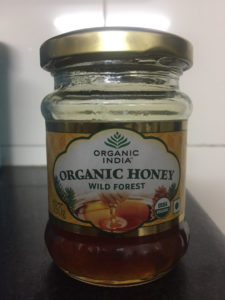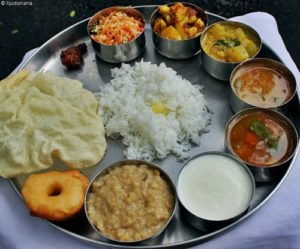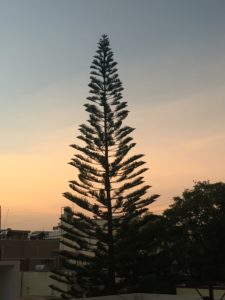Added 7/12/2018: Nominations for the 2018 Plutus Awards are now open. If you like what you read here, please consider nominating tenfactorialrocks.com in all the relevant categories! Please submit your nominations here! Only one submission per IP address, please! Thanks a lot for your support!
There..I just dated myself. If you remember “Honey, I Shrunk the Kids” movie (1989), then consider yourself also dated!
Regular readers of this website know about our big decision to move to India. I’ve also shared in an update that our move and settling in went easier than I expected. If you are new to India, you may want to read that first to get an overall economic perspective.

No, I still can’t levitate.
With nearly two months under our belt, I made an attempt at budgeting our expenses for living in the largest democracy (or demo-crazy as some rich Indians call it) in the world. Normally, in all my international assignments, I don’t budget anything for first couple of months because you need at least that much time to get the lay of the land, understand what the locals do and get plugged into the right networks to get you set up for a sustainable lifestyle in your chosen location.
Having done that, and having observed the costs for various products and services, I thought I will estimate our expense budget in India in this article. Keep in mind that this also includes our kid, whose school fees and related activities are also covered.
Though I’ve not written about our spending budget in the past, we’ve been spending around an average of $6000 a month for living a fairy comfortable life in the U.S. For India, I was particularly interested to compare what’s feasible here, without having a preset notion of a fixed spending budget.
In other words, we live the lifestyle first and then calculate a budget around it. I am not recommending this as the right method. It doesn’t apply probably for 90% of people. Heck, even the rest 10% may not agree but our case is rare. Budgeting is valuable (or even sexy) and living within it even more so, but our situation is rather unique that we can afford to diverge here. We believe in being sensibly frugal but not cheap just for calling ourselves too frugal!
I have always believed in getting the big things (house, car, insurance etc.) right as these expense categories will have the biggest impact on your total spending. Call me lazy but I like the Pareto rule – focus on the 20% that matter to gain 80% of the benefits!
This is why you will never hear on this site about coupon clipping and other frugal methods to save a nickel here or dime there. Don’t get me wrong, they also can add up to save living costs but only if you have optimized the big spending areas first.
Importantly, they will never compensate for bad decisions in the big categories that matter.
Imagine a car’s fuel tank – no amount of controlled driving will help save fuel if there is a gaping hole on one side. You will run out of fuel soon. You will get frustrated that despite your frugal driving attempts, you did not go the distance. If you have a fuel-efficient car and the fuel tank is sealed tight, then even too much driving won’t hurt you much. This may not be the best analogy but you get the idea!
I have also learned early in life to pick my battles and forego the rest. That’s probably why my marriage has lasted so long!
In that spirit, I put together a budget for our new life in India using items that are representative of our lifestyle, based on what we are spending on food, furniture, eating out, utilities, school fees etc.
Let me start with honey
Yes, a strange item to start with but bear with me. The TFR household is a significant user of high quality, natural honey. We use it in breakfast, sometimes with toast or at night with a warm glass of milk and even use it in other dishes.
Honey is a natural product so, quality depends a lot on the source. We don’t go overboard here with exotic grades but we generally prefer USDA-certified organic honey sourced from a protected, well maintained facility.
So, honey is where I start this budgeting with! I bought the organic honey below from an Indian retail store, and this is sourced from wild flower farms located in the upper reaches of India’s northern mountainous state Uttarakhand, at the foothills of The Himalayas. I covered this state a bit in an earlier article about The Ganga. I paid INR 190 ($3) for a 250 gram or 0.25 kilogram (0.55 lb.) bottle.

The honey was delicious, and it had a natural after-taste that is characteristic of all organically produced honey harvested from natural beehives. It also has a low crystallization index, which processed honey doesn’t have (you will see sugary precipitation even at room temperature from refined or sugar-infused honey).
Sidebar 1: India follows the metric system, so it’s kilograms, liters, and kilometers here instead of pounds, gallons and miles. My son is already working his grey cells at the everyday math problems he is having to solve here on unit conversion! Dad, I know how many pounds is a 2 kilogram bag of potatoes..do you? Yes kiddo (**dad quietly punches numbers in phone calculator **)
I compared our newfound Indian organic honey with a quality organic honey we used to buy in Texas. Back in the U.S., it sells at $8.95 for 12 oz. (0.75 lb.) bottle at Amazon, which works to $6.56 for the same 0.55 pound (0.25 kilogram) quantity. So, on apples to apples honey-to-honey basis, the cost here is less than half (46% to be precise) of U.S. The organic honey we really liked in the U.S. cost $12 for the same 12 oz. bottle but we rationalized to a lower cost organic honey below due to availability issues with the brand we liked. So, I used the lower cost product for comparison.

From honey to Honey…look at all that space!
The rent we pay for our 1900 sqft, 3 bedroom house in an upmarket neighborhood is 35,000 Rupees (INR), which is about $550. Similar sized property in a decent neighborhood in our Texas suburb would cost us about $1800. My friends tell me even that is a steal compared to many East or West coast cities where similar space would rent for $3000-4000+! So, even compared to my modest Texas town, the rent we pay now is about 1/3rd of equivalent U.S. rent.
With honey and rent out of the way, what comes next is transportation. Yeah, there is a grand order to my expense budget!
Here, I went a completely different route than how I’ve lived in the past. In my sensibly frugal article, I compared the benefits of a used car purchase versus a daily Latte. I’ve always bought used cars but out here in India, people I respect warned me it’s a bad idea due to risks of mechanical breakdown and unreliable service quality.
I was advised to get a new car with high ground clearance due to number of potholes on roads. After some deliberation and considering our interest to explore the country, we bought a premium model of Toyota Innova at a price of INR 1.8 million (about $23,000), and comes with 3-year full service warranty. This comfortably seats 7 people with modest baggage (or) say, 4 people with the entire back row available for our excess baggage and camping gear that routinely show us as the Americans that we are!
I am not including the car cost in the budget because it is a one-off item and was covered by my employer as part of my “settling in” expenses. I could’ve chosen a cheaper car and saved more of my settling in costs but I put our family safety and interests above saving the cost difference with a cheaper or used car.

Sidebar 2: My son is enrolled in a private school here. It is good but nothing fancy and it averages to $400 a month in costs. There is a school bus just like the one in the picture that picks him up right from our front door and drops him back in the afternoon. We pay separately around $100 a month for this privilege, as his school’s “transport fee”. Interestingly, the school bus is painted the same yellow color that we see in U.S. It also has a small octagonal red STOP sign attached to the driver side window that pops up when the bus driver stops the vehicle and the door opens.
Some things don’t change, I guess.
But some things do. Like the right hand drive so the driver is seated on the right side – I embarrassed myself trying to get my son to board the bus on the wrong side the first few times. In addition to the driver, it has a ‘caretaker’ lady whose job it is to ensure kids board and get off the bus without incident. The caretaker lady is employed by the school, just like the driver. My son stands tall for his grade. So, he doesn’t need any help getting on or off buses. I guess the caretaker mainly helps the little kids in grades 1-3 get on the bus.
The school bus looks like a mirror image of my son’s Texas school bus, with a tighter seating arrangement and the seats have less cushion (yeah, you must feel the potholes, it builds character is what I told my son who complained the first week, but he stopped after he made new friends on the bus). While the bus doesn’t scream luxury, I felt it was solidly built and reasonably well-maintained. The entire bus fleet in my son’s school was manufactured by Tata Motors. It’s not a brand you may know or even see on any school bus in the American public school systems but it is a reputed automobile company in India. Americans and Europeans may connect more with Jaguar and Land Rover automobiles, which are owned by Tata Motors.
OK, this went into a longer sidebar than I wanted (I can hear you go TFR, get off your bus fetish!), but the point is we are spending a good amount (by Indian standards) on schooling and transportation. Our expense budget also considers two ‘coaching’ classes we have enrolled our kid (one on advanced math and another for tennis), and each of them costs under $100 a month for 2-3 classes a week. For just around $10 per hour a class, he could join as many of these classes that he wants!
The total picture
All things included, our realistic expense budget for our lifestyle including rent is working to a total of INR 210,000 (~$3300) per month. This includes a family health insurance plan of INR 5,000 ($80) that covers us for 90% of all hospitalization expenses. Out-of-pocket medical (not covered) at $7 per doctor visit is budgeted separately at 2 visits/month and medicines at another $10 per visit.
Clothes, school and routine periodic expenses (including some recreational travel) are already covered in this total. This also includes a maid who comes daily (except Sundays) and cleans our dishes, floors, bathrooms and does the laundry. Also included are the really small ‘convenience’ expenses for dry cleaning and pressing our shirts/pants/skirts. These types of services are an interesting ‘cottage’ industry in India, and probably worth their own post. They are everywhere, convenient and provide excellent service.

Available at $5 where we had this type of smorgasbord vegetarian lunch, served by uniformed wait staff!
Our budget also includes our weekly eating out – vegetarian food is so delicious and cheap here that this luxury alone is worth going out frequently (daily, if you ask my wife).
In addition, our budget also includes a monthly provision of INR 25,000 ($400) for one-off expenses like appliances, maintenance or some local gifts, and a ‘buffer’ of INR 10,000 ($160) for any incidentals that we don’t care to track accurately. The $400 provision is included simply to smoothen out any one-off purchases, and so is the $160 buffer.
The grand total of INR 210,000 covers our monthly lifestyle comfortably here. At current exchange rates, it is worth US$3,315, so the annual expenses for our lifestyle here is projected to be $39,780. Let’s round that up to $40K.
Honey, I shrunk the budget!
From $72,000 a year in Texas to $40,000 a year in India, with more lifestyle conveniences than we enjoyed back in the U.S. Not a bad bargain, so far.
This budget also has several cushions, the biggest of which is the rental expense of INR 35,000, which will disappear when our 3-bedroom condo gets ready by middle of this year that I mentioned in our post about our net worth. It is expected to yield a rent comparable to our current rent. This line item alone will save 17% off the expense budget, which will bring our effective spend to under $34,000 a year!
When I see (relatively high) budget numbers like these for us in Asia, I can’t help but wonder how some families of 3 or 4 people claim to live on just $24,000 a year in U.S., even in the so-called cheaper parts of the U.S.? I can understand some apartments can be rented for $550 per month (the equivalent of our monthly rent) in some low cost neighborhoods in U.S. What if you own the home? Well, the property taxes, insurance and maintenance (‘PIM’ costs) will easily cost $550 per month, if not more, in most parts of the U.S..
One friend, who owns his $350K home outright in a suburb of Houston, spends $1000+ monthly for PIM cost. Another friend, who owns a comparatively modest home in a far suburb of Cleveland (valued by Zillow at $180,000), still spends about $800 monthly for PIM costs. These are professionally successful and financially sensible folks, with a significant net worth. They are shocked to hear how low my rental costs are for a 1900 sq.ft. two-story single family home with a large terrace.
 Sidebar 3: Speaking of terrace, we have a fairly big one here (~1000 sq. feet). So, like the majority of Indians, we only chose to buy a washing machine (no dryer). After the wash, our maid (who works 3 hours daily at our home, except Sunday, who is paid $150 a month) sun-dries the clothes on the terrace. I love the crispy fresh smell after the clothes are hanged out to dry under the sun. It takes as little as one hour during Indian summer to as much as 4-5 hours during the winter to completely dry the clothes.
Sidebar 3: Speaking of terrace, we have a fairly big one here (~1000 sq. feet). So, like the majority of Indians, we only chose to buy a washing machine (no dryer). After the wash, our maid (who works 3 hours daily at our home, except Sunday, who is paid $150 a month) sun-dries the clothes on the terrace. I love the crispy fresh smell after the clothes are hanged out to dry under the sun. It takes as little as one hour during Indian summer to as much as 4-5 hours during the winter to completely dry the clothes.
Aside from energy cost saved, this just feels like the right thing to do to blend in with the local culture. You often see clothes hung outside to dry on the terrace or balcony of most Indian homes. There is a beautiful tree right outside our home that provides a nice focus to this sunset picture I took from our terrace.
Sitting 10,000 miles away in a country dubbed as one of the low cost locales in the world, I am scratching my head how some FIRE’d families claim to live in U.S. for $24,000 a year? Granted, we are not living in India as frugally by the definition of ‘recycling dryer sheets’, but we are being relatively frugal in the big things that contribute to majority of living costs.
Being vegetarians, our food costs are below $300 a month plus we spend another $150 for eating out (despite eating out weekly here). And we eat very well (you can tell by our choice of honey, right?). In fact, I should reduce my weight by 8 lbs. to get to my target BMI (more on that later).
My wife already feels we are frugal enough so I can’t cut any more from our $34K spending estimate (net of rental costs). It is impossible for us to shave $10,000 from our $34,000 effective spend in India to match the $24K budget of some American FIRE bloggers. That’s a reduction of 30% out of a budget that has practically zero housing costs (as this $34K figure already considers our house rent is offset by our soon-to-be-ready condo’s estimated rent).
Early retirement is tempting (but TFR, oh behave!)

A very different retirement math here!
Among several things, what this analysis has done for us is that should we choose to retire here, this puts us in a different level in finances than what U.S. can offer. If I apply a conservative 3.27% safe withdrawal rate, we would need $1.23 million in invested assets for $40K annual spend, inflation-adjusted forever (within reasonable limits, of course). We would need just over $1 million in financial assets for the $34,000 spending budget.
We feel incredibly blessed to be in the position of considering a ‘permanent’ retirement in India even now. Of course, having covered my relocation cost, my employer will be totally pissed if I told them I am going to retire now, but it’s nice to know that option exists! I must remind myself to stay disciplined to my $10! goal.

Yes, India can be chaotic and a nightmare to navigate through if you don’t know the landscape. Like I mentioned in my previous post, the Internet continues to be a source of frustration. However, if you can blend in, you will notice many nice things. This country is incredibly diverse, rich in culture, offers many affordable daily luxuries and serves delectable cuisine at very low cost (if you can tolerate a bit of spice!).
An old proverb says ‘variety is the spice of life’. So if you can handle a little spice and stay flexible, India can make you belong with its amazing variety.
I know this has been a monstrous post (2800+ words) with 3 sidebars, so if you stayed with it till the end, thank you. Hope you learned something reading it as I did in writing it. Share your comments below.
Raman Venkatesh is the founder of Ten Factorial Rocks. Raman is a ‘Gen X’ corporate executive in his mid 40’s. In addition to having a Ph.D. in engineering, he has worked in almost all continents of the world. Ten Factorial Rocks (TFR) was created to chronicle his journey towards retirement while sharing his views on the absurdities and pitfalls along the way. The name was taken from the mathematical function 10! (ten factorial) which is equal to 10 x 9 x 8 x 7 x 6 x 5 x 4 x 3 x 2 x 1 = 3,628,800.

Pingback: May 21st, 2018 Features - Rockstar Finance :: Curating the best of money and personal finance
Pingback: The Sunday Best (4/29/2018) - Physician on FIRE